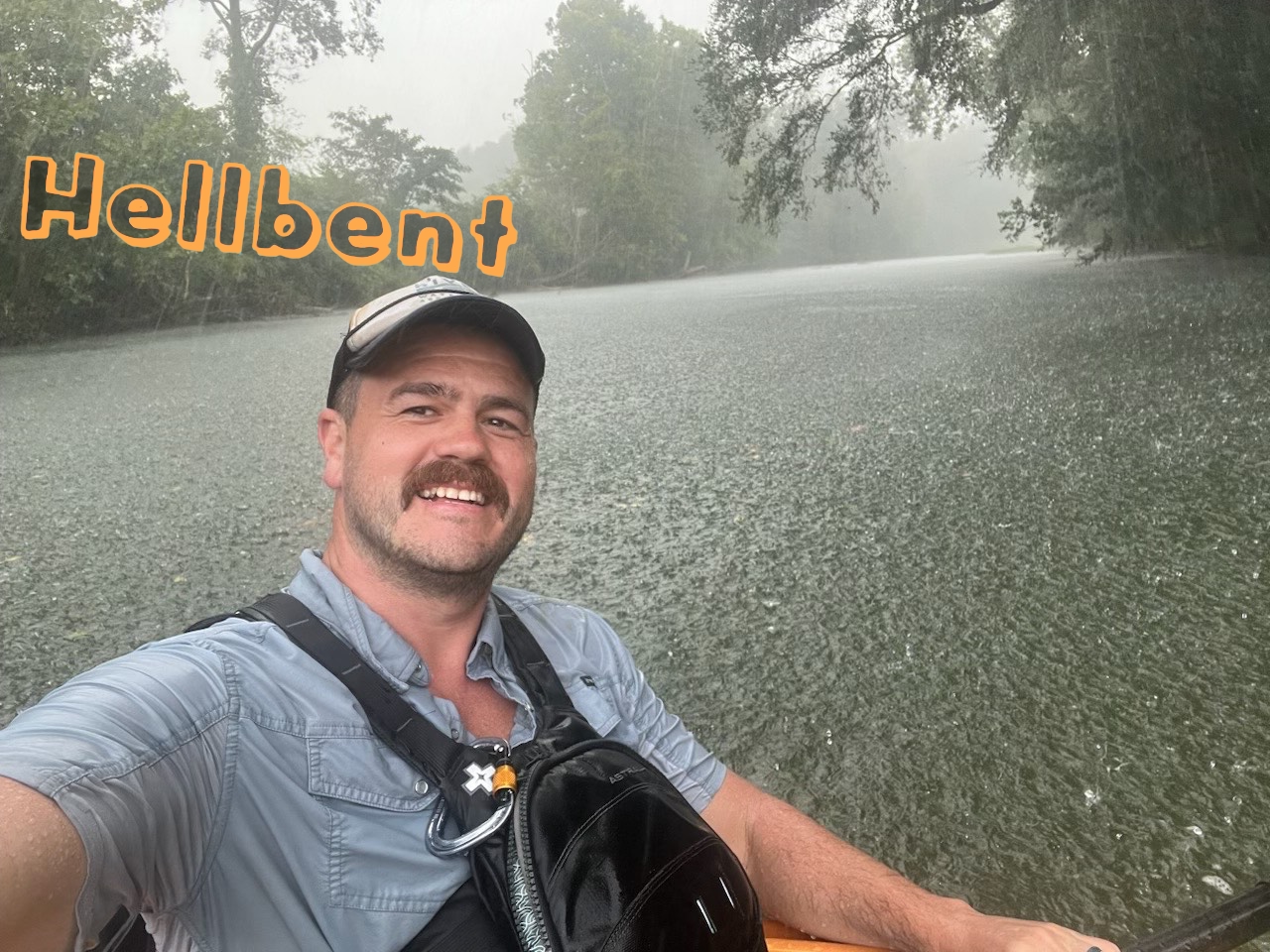Sustainability (497)
Children categories

Sustainable Development Goals (911)
The Sustainable Development Goals are a universal call to action to end poverty, protect the planet and improve the lives and prospects of everyone, everywhere. The seventeen Sustaiable Development Goals (SDG) were adopted by all UN Member States in 2015, as part of the 2030 Agenda for Sustainable Development which set out a 15-year plan to achieve the Goals.
Opposition mounts to Pisgah/Nantahala national forest management plans
ASHEVILLE — An alliance of conservation groups notified the U.S. Forest Service of its intent to sue the federal department unless officials fix what it calls glaring deficiencies in the Nantahala-Pisgah Forest Plan.
Potential plaintiffs allege the Forest Service’s management plan for the Nantahala and Pisgah national forests is flawed. They maintain the Forest Service plan favors commercial logging, ignores the best science available, and puts several endangered bat species at risk of extinction.
The endangered species potentially affected are the northern long-eared bat, Indiana bat, Virginia big-eared bat, and the gray bat. Two species that are being considered for the endangered species list — the little brown bat and the tricolored bat — would also be adversely affected.
MountainTrue, its lawyers at the Southern Environmental Law Center, and coalition partners — the Sierra Club, The Wilderness Society, Defenders of Wildlife, and Center for Biological Diversity — sent a 60-day Notice of Intent to Sue (NOI), which is a prerequisite to filing a lawsuit under the Endangered Species Act. The letter alleges the Forest Service relied on inaccurate and incomplete information during the planning process, resulting in a plan that imperils endangered wildlife.
Green floater mussels are somewhat safe here but not elsewhere
Written by Thomas Fraser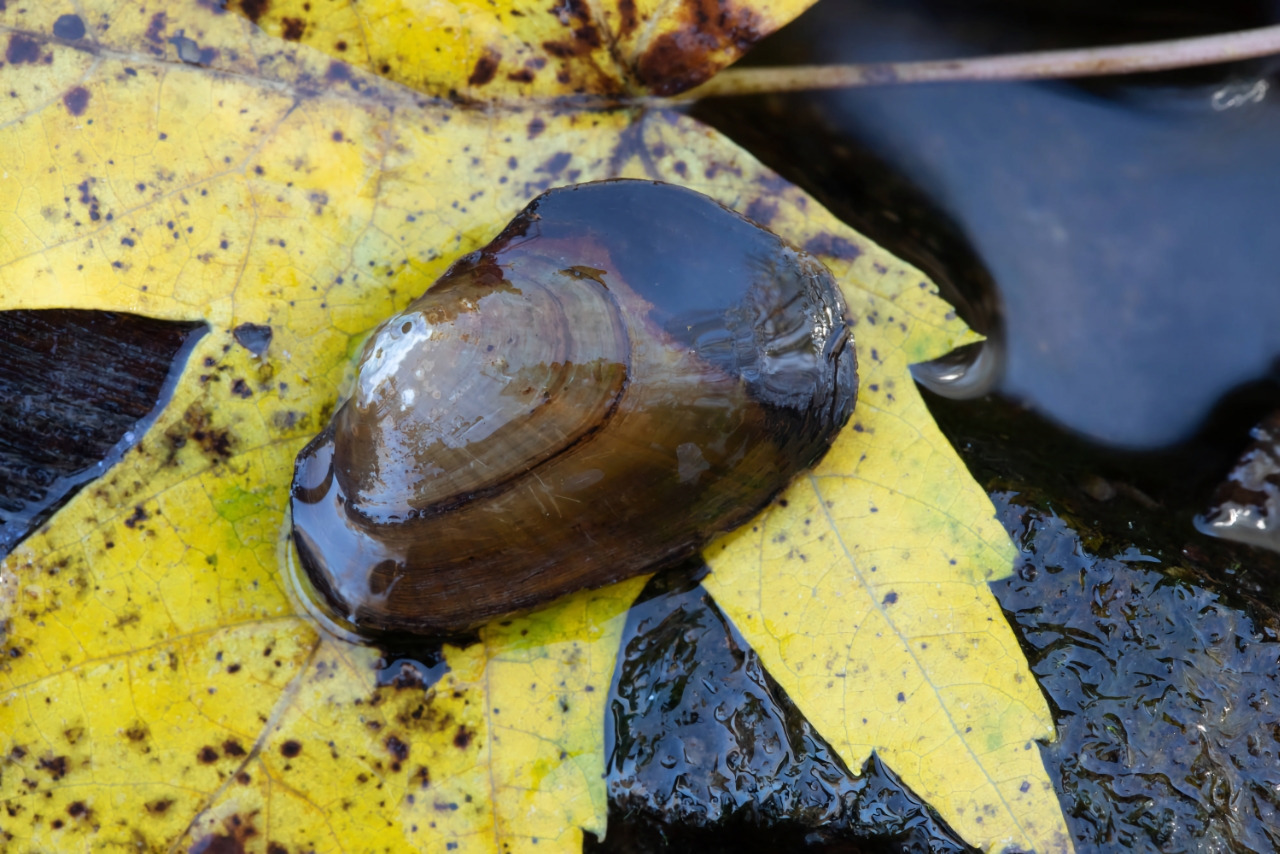 A green floater mussel (Lasmigona subviridis). Ryan Hagerty/USFWS
A green floater mussel (Lasmigona subviridis). Ryan Hagerty/USFWS
WASHINGTON — The green floater, a freshwater mussel native to the waters of Southern Appalachia, is now formally considered at risk of extinction due to the loss and fragmentation of its aquatic habitat.
The U.S. Fish and Wildlife Service determined the green floater, historically found in 10 eastern U.S. states, is likely to become endangered due to existing and emerging threats. The service is proposing to list the mussel as threatened under the Endangered Species Act.
The green floater is still found in its native range in North Carolina, Tennessee, Virginia and West Virginia. It is considered locally extinct in Alabama and Georgia.
While the species has strongholds in places, green floaters are rare in nearly 80 percent of the watersheds where they naturally occur. More than 75 percent of the nation’s native freshwater mussel species are endangered or threatened, considered to be of special conservation concern, or presumed extinct, according to USWFS.
Here’s an updated summer primer for the end of the world as we know it
Written by Rick Vaughan The Earth’s sun is seen in this NASA image. Scientists said July might be the hottest month in 100,000 years.
The Earth’s sun is seen in this NASA image. Scientists said July might be the hottest month in 100,000 years.
The global heat wave of July 2023 has spared Southern Appalachia. So far.
KNOXVILLE — July 2023 has so far offered a scary look at global climate change around the world, and the month is already one for the record books.
This month will likely end up being the hottest July on record, globally speaking. That comes after quantitative conclusions from multiple scientists that the past week was, globally, the warmest in 100,000 years.
The Southern Appalachians have generally been spared from the heat settling on vast portions of the country and world, but that will soon change. The National Weather Service predicts higher than average temperatures flirting with 100 degrees in the Tennessee Valley next week. Record-breaking temperatures are possible. The average high temperature for July in Knoxville is 87 degrees.
- climate change
- national weather service
- el nino year
- noaa physical sciences laboratory (psl)
- brandon wasilewsk
- anticyclone heat dome
- extreme heat
- national weather service at morristown
- canada wildfire
- wildfire in canada
- world weather attribution
- south florida ocean temputure
- heat wave
- hottest july on record
- ocean temputure
- rick vaughan
- european climate change
- greece wildfire
- italy wildfire
- china record heat
ORNL researchers develop wildlife crossing guards
Written by Stephanie G. Seay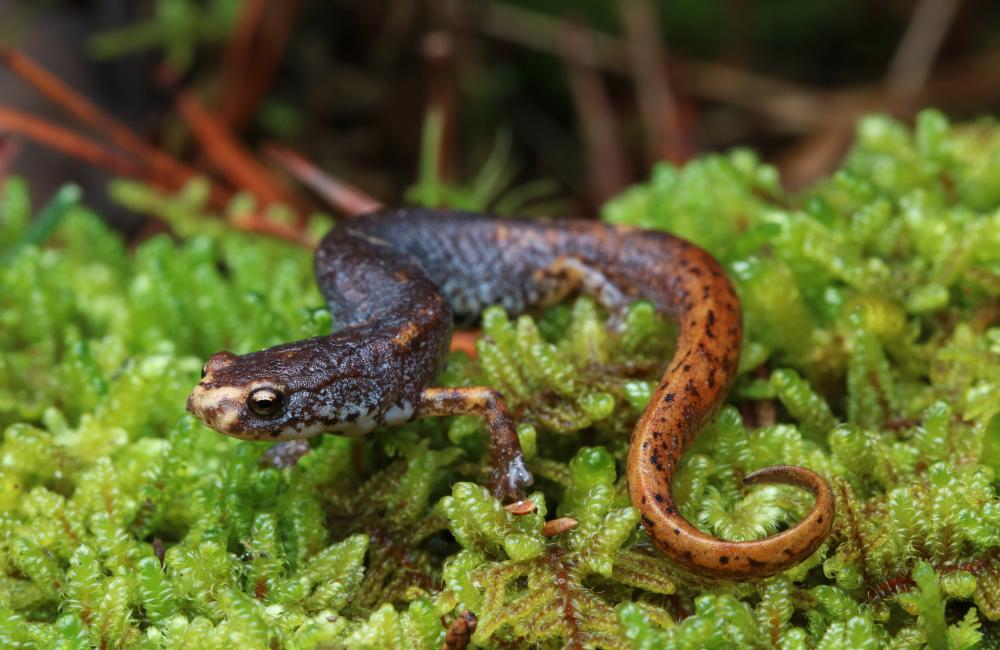 Four-toed salamanders were among the animals included in ORNL research to limit roadkill on the reservation and elsewhere. Bryce Wade/ORNL
Four-toed salamanders were among the animals included in ORNL research to limit roadkill on the reservation and elsewhere. Bryce Wade/ORNL
The 32,000-acre reservation serves as a vast laboratory for wildlife-protection efforts
Stephanie Seay is a senior science writer and communications specialist in the ORNL Communications Division.
OAK RIDGE — Oak Ridge National Laboratory researchers developed a model framework that identifies ways to ensure wildlife can safely navigate their habitats while not unduly affecting infrastructure.
The project centered on the 32,000-acre Oak Ridge Reservation in Tennessee, home to Department of Energy facilities and several at-risk species like the four-toed salamander.
Scientists identified habitats and simulated solutions like conservation buffers and open-bottom culverts to allow safe passage for salamanders and other wildlife, which cost far less than large-scale barrier removal and similarly boost ecological connectivity.
“Development and environmental sustainability don’t have to be at odds,” said ORNL’s Evin Carter. “Our collaborative approach with project managers and engineers shows wildlife management can be an integral part of land-use planning without introducing undue cost or delays.”
ORNL doctoral student Bryce Wade said the model also benefited from 30 years of high-resolution data available because of the reservation’s history and management as a National Environmental Research Park.
Citizens continue call for TVA to adopt sustainable alternatives to coal plants
Written by Ben Pounds Citizens are objecting to plans to replace the coal boilers at Kingston Fossil Plant with natural gas. Ben Pounds/Hellbender Press
Citizens are objecting to plans to replace the coal boilers at Kingston Fossil Plant with natural gas. Ben Pounds/Hellbender Press
Solar? Gas? Future of Kingston plant up in the air
KINGSTON — Tennessee Valley Authority is considering whether to go with gas or solar power after it closes the infamous Kingston Fossil Plant in Tennessee.
The plant has stood since 1955 in Roane County. The federal utility plans to close Kingston Fossil plant and is looking at ways to replace the power it generated. It’s asking the public for comments. The utility’s proposals center around replacing the power generated by the plant with either solar generation or natural gas. One option includes replacing the coal-powered plant at the site with a fossil gas plant.
TVA recently proposed to retire three units between 2026 and 2031 and the other six units between 2027 and 2033. Ash spilled from a dike at this plant in 2008. A lawsuit was recently resolved surrounding the health damage to people working on cleaning up the spill. TVA has identified trouble with starting up and shutting down the plant for power generation and technical issues with lower boilers as the reasons for closing the plant, not the spill.
ORNL scientists are plugging big leaks in the plastics recycling stream
Written by Ben Pounds ORNL polymer scientists Tomonori Saito, left, and Sungjin Kim upcycled waste plastic to create a stronger, tougher, solvent-resistant material for new additive manufacturing applications. Ben Pounds/Hellbender Press
ORNL polymer scientists Tomonori Saito, left, and Sungjin Kim upcycled waste plastic to create a stronger, tougher, solvent-resistant material for new additive manufacturing applications. Ben Pounds/Hellbender Press
Thanks to an East Tennessee science powerhouse, recycling might become easier
This is the first in a series about ORNL’s Technology Innovation Program 2023
OAK RIDGE — Researchers at Oak Ridge National Laboratory developed a catalyst they say can break down a range of plastics, including polyesters, polycarbonates, polyurethanes and polyamides through a low-energy green process. In lay terms, the process can recycle many plastic-based carpets, ropes, other textiles, bottles, mattresses, protective equipment, car components and other things that weren’t previously easy to recycle into valuable chemicals.
Tomoronori Saito, a researcher at ORNL’s chemical sciences division presented some results of research at ORNL on July 14 as part of a symposium highlighting commercially valuable work that takes place at one of the country’s main science laboratories. Saito and fellow researcher Arif Arifuzzaman showed off plastics in varying levels of disintegration using their catalyst. It was part of the lab’s Technology Innovation Program 2023, promoting the lab’s research for possible business partnerships.
Orianne Society shakes, rattles and rolls to preserve precious Southeastern snakes
Written by Ray Zimmerman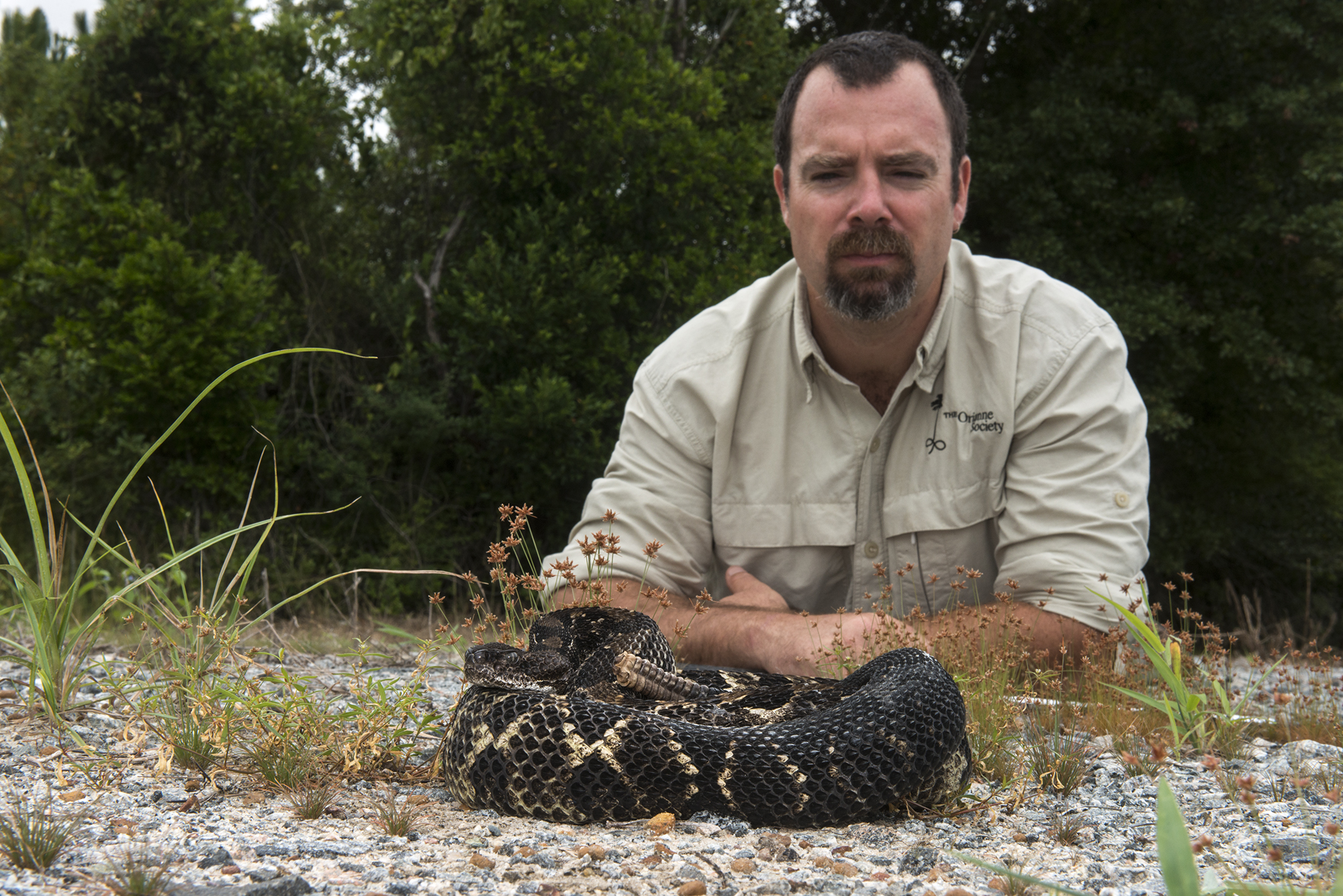 Chris Jenkins researches timber rattlesnakes like the one seen here. Courtesy Orianne Society
Chris Jenkins researches timber rattlesnakes like the one seen here. Courtesy Orianne Society
New film highlights importance of rattlesnakes to the Southern Appalachian environment
Timber rattlesnakes have been demonized for centuries, perhaps to the extent humans are incapable of understanding the snake’s importance to the world.
The Orianne Society determined the apex predator is of vital importance to the Appalachian region, yet the snake is facing tremendous challenges to its survival.
The film “Rattled: Conserving Rattlesnakes in Appalachia — A Conservation Documentary.” introduced those sentiments when it premiered in Atlanta and other locations in Georgia and North Carolina.
Researcher Dr. Chris Jenkins, CEO of the Orianne Society, is behind the story for the film.
Jenkins said timber rattlesnakes are declining across their range from Maine to Texas. Wildlife biologists attribute the decline to “low recruitment,” meaning reproductive rates that fail to replace their population.
A female rattlesnake may live 50 years, though most live only to 30 or 40. Maturity usually requires 10 years, and snakes may only produce young every other year. The broods are small and the mortality rate is high among young snakes. Rattlesnakes that encounter humans are often killed, leaving no successors.
- timber rattlesnake
- tennessee snake
- are there rattlesnakes in the southeast?
- orianne society
- chris jenkins
- rattled: conserving rattlesnakes in appalachia – a conservation documentary
- chattooga river
- cottonmouth snake
- wildlife conservation society
- pit viper
- snake fungal disease
- crotalus horridus
- indigo snake
- population dynamic
- copperhead
- venomous snake
- snake in my yard
- avoid snake bite
- gopher tortoise
- longleaf pine forest
- keystone species
- hibernaculum
ORNL showcased its best science projects at July 14 tech conference

OAK RIDGE — Scientist-inventors from the Department of Energy’s Oak Ridge National Laboratory presented seven new technologies during the Technology Innovation Showcase on July 14 at the Joint Institute for Computational Sciences on ORNL’s campus.
The inventions are supported by ORNL’s Technology Innovation Program, or TIP, which provides targeted investments in new lab-developed technologies to enhance their commercial readiness. Since 2012, ORNL has invested more than $11 million in 49 projects, resulting in 37 commercial licenses and options with partners ranging from Fortune 100 companies to early-stage startups.
“ORNL’s researchers are creating next-generation technology for buildings, manufacturing, medicine and chemistry,” said Mike Paulus, ORNL Partnerships director. “The inventions selected for TIP investment show significant potential for commercialization.”
The showcase brings together inventors and commercialization professionals from ORNL with industry representatives for a morning of presentations followed by one-on-one meetings, tours and demonstrations.
Tennessee Aquarium brings more baby sturgeon into the world
Written by Casey Phillips A young lake sturgeon is viewed through a photographic aquarium after arriving at the Tennessee Aquarium Conservation Institute. Tennessee Aquarium
A young lake sturgeon is viewed through a photographic aquarium after arriving at the Tennessee Aquarium Conservation Institute. Tennessee Aquarium
Tennessee Aquarium welcomes 2,500 baby lake sturgeon as restoration effort turns 25 years old
Casey Phillips is a communications specialist at the Tennessee Aquarium in Chattanooga.
CHATTANOOGA — The approach of summer coincided with the arrival of thousands of juvenile lake sturgeon in the Tennessee Aquarium Conservation Institute.
Biologists at the Aquarium’s freshwater field station welcomed 2,500, 2-inch babies into their care. After a steady diet of bloodworms and brine shrimp, bringing the fish to at least 6 inches, they will be reintroduced into the Tennessee River.
These tiny fish hold tremendous promise. Adult lake sturgeon may reach lengths of 8 feet and live 150 years.
“They start out really small, so it’s shocking to think how big they can get,” says reintroduction biologist Sarah Kate Bailey. “The first year of life is when they grow the quickest.
“They grow so fast while we have them here. You’ll go home for the day, come in the next morning, and they look like they’ve grown overnight.”
- tennessee lake sturgeon
- sturgeon in tennessee river
- sturgeon recovery
- sturgeon reintroduction
- casey phillips writer
- lake sturgeon
- sarah kate bailey
- clean water act of 1972
- dr anna george
- chattannoga aquarium
- chattanooga environment
- Tennessee
- warm springs natural fish hatchery
- lake sturgeon working group
- tva
- tennessee valley authority
- reservoir water release
- tennesse wildlife resources agency
- tennessee aquarium conservation institute
- tennessee aquarium
How a study of so-called “trash birds” revealed conservation clues for urban species
Written by Rebecca Heisman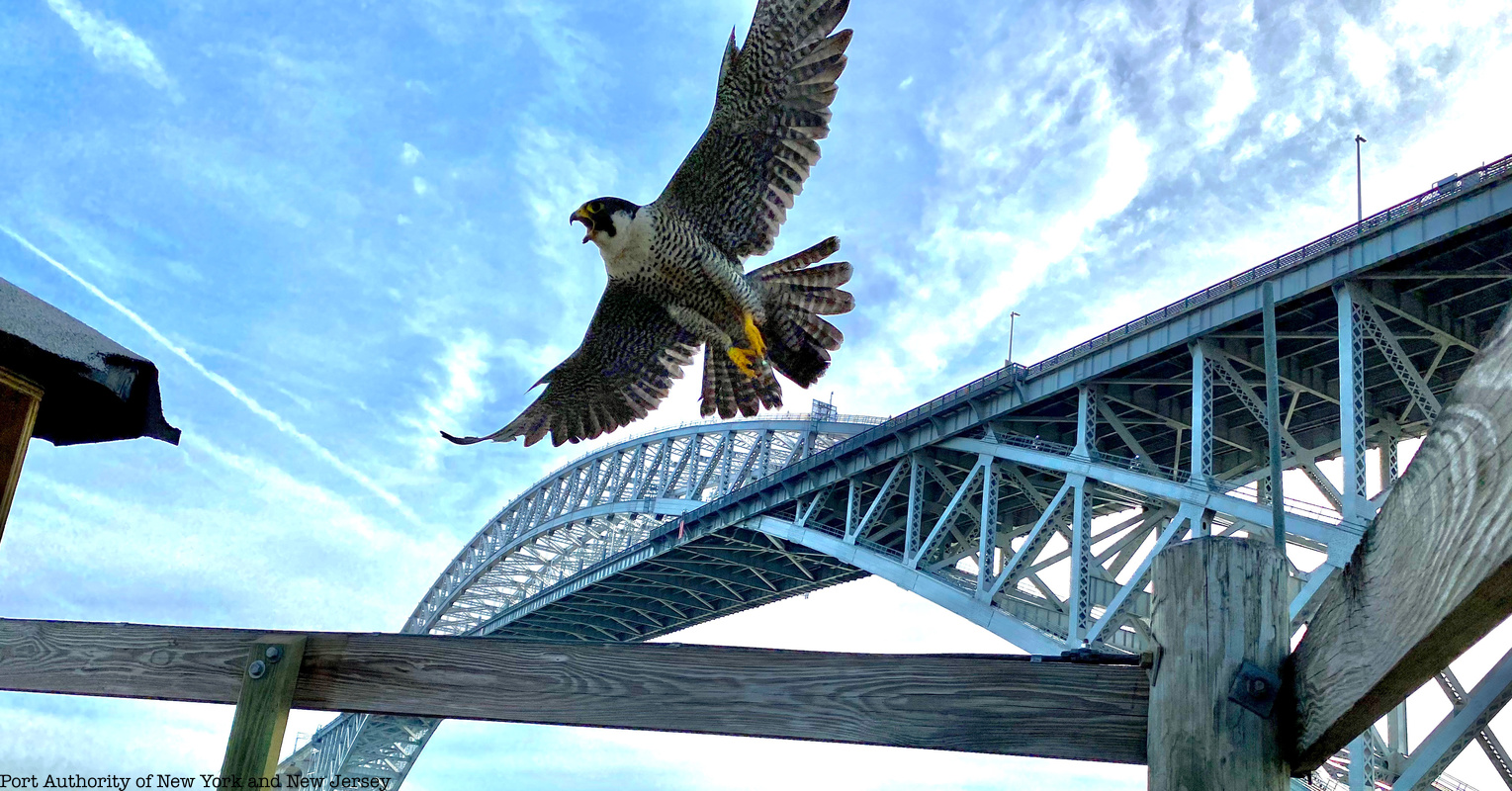 The Port Authority of New York and New Jersey documented a family of peregrine falcons on the Bayonne Bridge. Port Authority
The Port Authority of New York and New Jersey documented a family of peregrine falcons on the Bayonne Bridge. Port Authority
What city birds around the world have in common
This story was originally published by The Revelator.
Why do some bird species seem to flourish alongside humans, eating our crumbs and nesting in our backyards, while others prefer to live as far as possible from dense human populations?
Monte Neate-Clegg began to ponder the question while attending the American Ornithological Society’s 2019 conference in Anchorage, Alaska. “I was staying at an AirBnB and two of the birds I wanted to see in Anchorage, white-winged crossbills and boreal chickadees, were just in the yard,” said Neate-Clegg, at the time a Ph.D. student at the University of Utah. Although new and beautiful to him, the species are common in Anchorage and so omnipresent they’re typically ignored by residents.
“I started thinking, what is it that makes these ‘trash birds’ here, and not elsewhere?”
Neate-Clegg sounds sheepish about using the pejorative-sounding term “trash bird,” but it’s a phrase commonly used by birdwatchers to refer to species ubiquitous to a given location they cease to become interesting and can become irritating. Classic examples include pigeons in city centers and snack-stealing gulls on beaches.
One man’s trash bird is another’s research query. Neate-Clegg wondered if specific traits make certain species more able to thrive in cities around the world. After joining ornithologist Morgan Tingley at his lab at UCLA as a postdoctoral researcher in 2021, he proposed a lab-wide project in an attempt to answer the question.
The research drew on data providing clues which may eventually reveal a roadmap making our cities more bird friendly.
- monte neateclegg
- american ornithological society
- boreal chickadee
- whitewinged crossbill
- morgan tingley
- rebecca heisman
- peregrine falcons nyc
- urban bird
- avonet
- morphology
- functional trait
- ecology
- bird specimen
- ornithology
- natural history
- museum
- trash bird
- big data science
- urban biodiversity
- threatened species
- concrete jungle
- city rewilding
- urban microrewilding
- city bird
More...
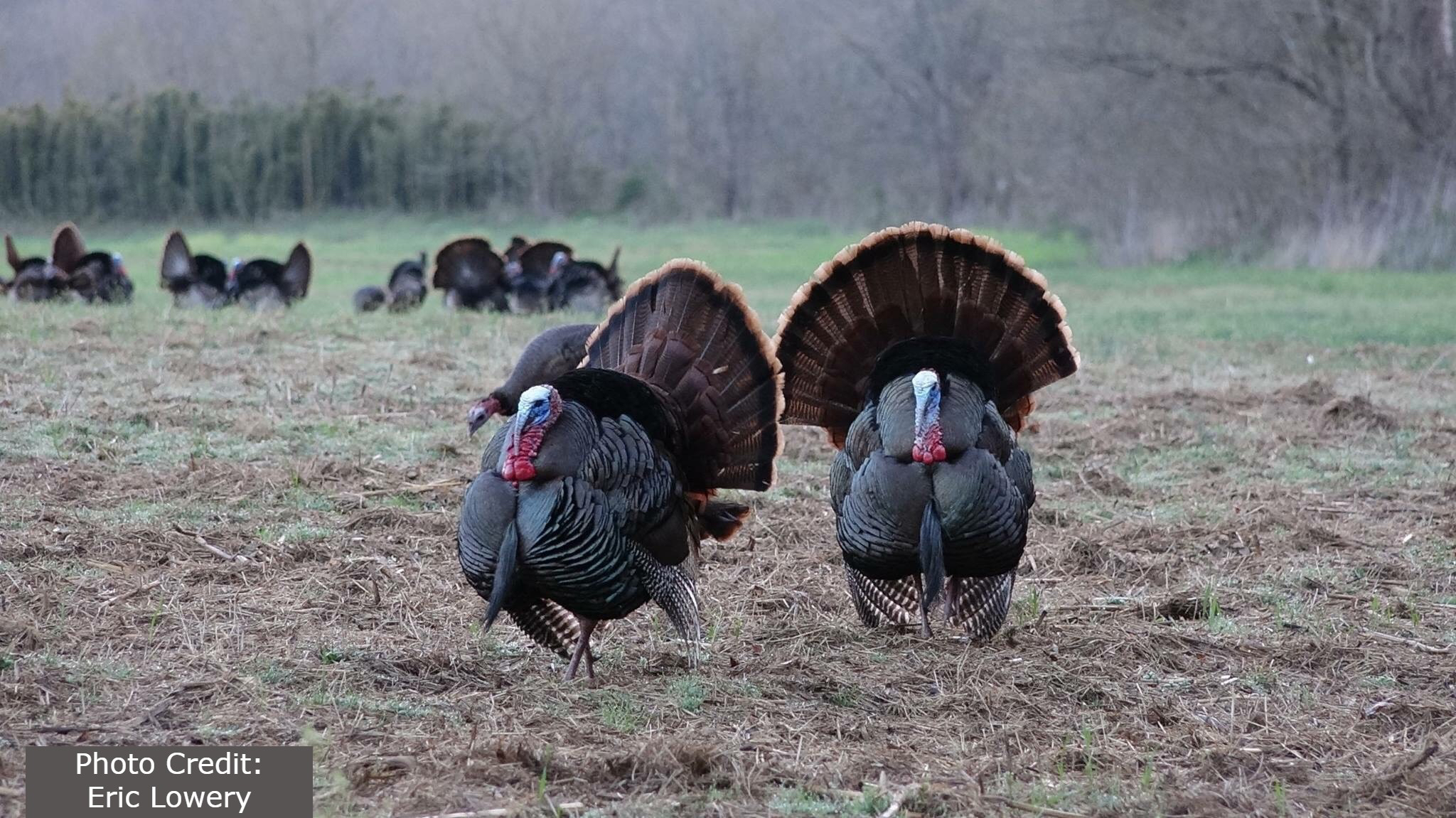 American wild turkey populations have recovered from historic lows. TWRA still needs help managing the modern populations. Courtesy Eric Lowery via Tennessee Wildlife Resources Agency
American wild turkey populations have recovered from historic lows. TWRA still needs help managing the modern populations. Courtesy Eric Lowery via Tennessee Wildlife Resources Agency
TWRA wants you to help build research on USA’s second bird
NASHVILLE — Benjamin Franklin only joked (we think) about making the wild turkey the national bird, but this summer you can help Tennessee with research on the turkey’s national history and renaissance.
Turkeys and bald eagles both grace the state and Southeast and have a notably parallel history of climbing from dire straits nationwide.
The bald eagle became the national symbol on the U.S. seal in 1782.
Declaration of Independence signer Franklin said he would have preferred a different bird. While he may have been joking, he never lobbied for it publicly. His comments in a letter to his daughter, Sarah, have become infamous.
“For my own part I wish the bald eagle had not been chosen as the representative of our country. He is a bird of bad moral character. He does not get his living honestly. You may have seen him perched on some dead tree, where, too lazy to fish for himself, he watches the labour of the fishing hawk; and when that diligent bird has at length taken a fish, and is bearing it to his nest for the support of his mate and young ones, the bald eagle pursues him, and takes it from him … the turkey is in comparison a much more respectable bird, and withal a true original native of America.”
- twra
- twra turkey
- wild turkeys in tennessee
- wild turkeys rebound
- wild turkey survey
- wild turkey rebound
- wild turkey ben franklin
- ben franklin
- bald eagle
- national bird of us
- tennesse wildlife resources agency
- national bird
- wild turkey population
- bald eagle population
- bald eagle history
- wild turkey history
- stephen bales
- thomas fraser
- ben pounds
Hellbent: Little River Watershed Association swims upstream to protect one of Earth’s great rivers
Written by JJ Stambaugh![Andrew Gunnoe, President of Little River Watershed Association]() Andrew Gunnoe is seen in the rain on Little River in Blount County, Tennessee. He is board director for Little River Watershed Association. Courtesy LRWA
Andrew Gunnoe is seen in the rain on Little River in Blount County, Tennessee. He is board director for Little River Watershed Association. Courtesy LRWA
Andrew Gunnoe helms spirited efforts to preserve beloved Little River but the current is swift
MARYVILLE — For 25 years, the handful of men and women involved with the nonprofit Little River Watershed Association (LRWA) have been protecting the crystal clear waters as they plummet from the Great Smoky Mountains before meandering through Blount County and merging with the Tennessee River.
“We see ourselves as the voice of the Little River, speaking for the river and its health,” said Andrew Gunnoe, president of the LRWA Board of Directors.
From the famous swimming hole at the Wye to the profusion of inner tube rental companies in Townsend, the Little River is one of the region’s most popular spots for water recreation. Further downstream, the waterway becomes an almost perfect spot for fishing, canoeing and kayaking.
For all the popularity as a recreation stop, the 59-mile stretch of water is also a vital habitat for numerous aquatic species and provides the 120,000-plus residents of Blount County with drinking water.
- little river diversity threat
- little river
- little river aqautic life
- little river watershed association
- preserving water quality
- maryville, tennessee
- townsend
- great smokies
- little river national park
- conservation fisheries
- biodiversity
- blount county
- tennessee valley authority
- escherichia coli
- tva
- e coli
- stream school
- university of tennessee environmental studies and sustainability
- sediment pollution
- water quality monitoring
Nature is full of sensations and sounds, so David Haskell wrote song books
Written by Ray Zimmerman
In Hellbender Press interview, heralded writer describes the way natural sounds shape our world
David George Haskell encourages you to pay attention to the sounds of the natural world.
It’s what led him to write four books; two have been finalists for the Pulitzer Prize, including his latest book, “Sounds Wild and Broken: Sonic Marvels, Evolution’s Creativity, and the Crisis of Sensory Extinction.”
A link on Haskell’s website provides a gateway into natural sounds he describes in the book through the essay “The Voices of Birds and the Language of Belonging.” Visitors to this essay’s page can read the piece or listen to a recording of Haskell reading it, accompanied by recorded bird songs providing a soundtrack for the topic.
Haskell is fascinated by sound. His dissertation, written in the 1990s, was a study of bird sounds. Predators hunt birds largely by ear, which has influenced the evolution of birdsong. His writing is a powerful and beautiful way to understand our relationships with the world through bird sounds.
Southern enviros again take aim at budding TVA strategy to replace coal with fossil gas
Written by Anita Wadhwani Warnings posted in Dickson County near Tennessee Gas Pipeline property. John Partipilo/Courtesy Tennessee Lookout
Warnings posted in Dickson County near Tennessee Gas Pipeline property. John Partipilo/Courtesy Tennessee Lookout
Environmental groups sue Tennessee Valley Authority over proposed new power plant
This story was originally published by Tennessee Lookout.
NASHVILLE — A trio of environmental groups filed suit against the Tennessee Valley Authority, claiming the utility violated federal law by failing to properly evaluate climate, environmental and financial impacts of a proposed new gas-fired plant in Cumberland City, Tennessee.
The lawsuit, filed in a Nashville federal court this month, also claims that TVA quietly inked a deal with an international pipeline company to supply the gas-fired plant, even as it publicly went through the motions of seeking input on alternative sources of power to replace the Cumberland Fossil Plant, its aging coal-fire facility located about 60 miles northwest of Nashville.
The groups are seeking an immediate halt to construction on the gas plant and an order forcing the utility to revise the existing environmental impact study used as the basis for moving forward with the gas-fired plant.
“Our country’s largest utility has gamed the system to fast-track dirty energy projects and that’s why we’re going to court to stop it,” Gaby Sarri-Tobar, a campaigner with the Center for Biological Diversity, said in a statement. “TVA needs to be held accountable for its reckless pursuit of a new fossil gas plant in the midst of the climate emergency.”
